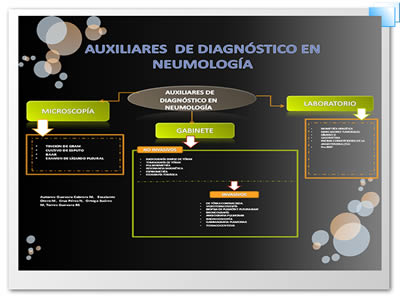
En la búsqueda de un diagnóstico definitivo, actualmente el médico cuenta con una gran variedad de procedimientos a su disposición para apoyo en la sospecha clínica, incluso en la terapéutica.
Existen auxiliares sencillos no invasivos para determinadas patologías y procedimientos invasivos con técnicas especiales, es por ello que el médico debe conocerlas y saber elegir el mejor método diagnóstico, acorde y necesario a la sospecha clínica, con el fin de evitar invadir al paciente con estudios innecesarios, implicando un riesgo elevado de morbimortalidad, además, un alto costo para el paciente e incluso sin beneficio alguno, ya que algunos resultan ser terapéuticos.
Un simple examen radiológico de los pulmones y la pleura ha cambiado con la ayuda de la biotecnología, ya que se han creado aparatos innovadores que incluyen imágenes de muy buena calidad y resolución tal como de tomografía computarizada, resonancia magnética nuclear y ultrasonido, entre otras.
Estos procedimientos varían considerablemente, no sólo en cuanto a fiabilidad y especificidad de diagnóstico, sino también en términos de la incomodidad y el peligro para el paciente. Conocer las actualidades sobre los auxiliares diagnósticos en patología respiratoria nos llevará a la adecuada aplicación de éstos, comenzando con procedimientos que impliquen poco riesgo y sólo si el paciente requiere, continuar con procedimientos complejos, valorando la morbilidad y la mortalidad potencial.
Palabras clave: Neumología, diagnóstico.
In the search for a definitive diagnosis, nowadays, physicians have a wide variety of procedures available to support clinical suspicion, even in therapeutic.
There are simple procedures, non-invasive, for certain pathologies, and invasive procedures with special techniques. Therefore, physicians should know these procedures and find the best diagnostic method, according to the clinical suspicion, in order to avoid saturating the patient with unnecessary studies that involves a high risk of morbidity and mortality, moreover, a high cost for the patient, even without benefit, since some of them can be therapeutic.
A simple radiological examination of the lungs and pleura has changed with the help of biotechnology, since it has created innovative appliances that include images of very good quality and resolution such as, computed tomography scans, nuclear magnetic resonance and ultrasound, among others.
These procedures vary considerably, not only in terms of reliability and specificity of diagnosis, but also in terms of the discomfort and risk to the patient. Knowing the current updates on respiratory pathology diagnostic auxiliaries, will take us to a proper application of these diagnostic, starting with procedures of low risk, and only if the patient requires it, then continue with complex procedures, valuing their morbidity and the potential mortality.
Keywords: Neumology, diagnosis.
[a] Profesor Investigador de la Universidad Autónoma del Estado de Hidalgo <<